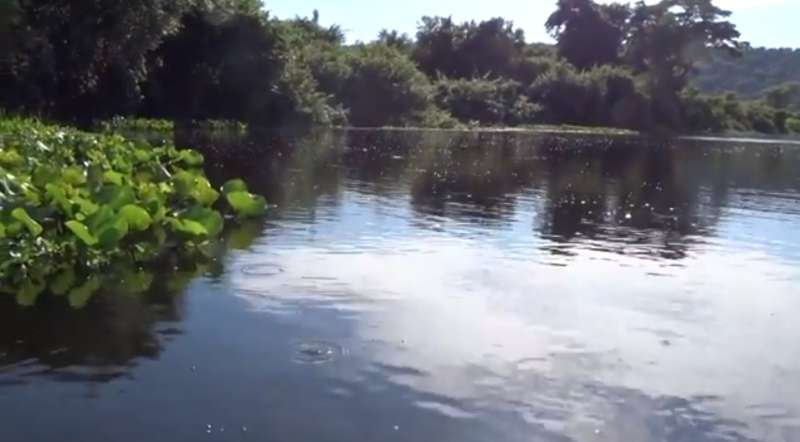Methane bubbles are effect and cause of rise in temperature

Due to climate change, more methane is bubbling up from lakes, ponds, rivers and wetlands throughout the world. The release of methane, a potent greenhouse gas, leads to a further increase in temperature, thus creating a vicious circle. This is the conclusion of a team of biologists led by Radboud University in an article published in Nature Communications on 22 November. Reducing greenhouse gas is the way to break the vicious circle.
"Never before have such unequivocal, strong relationships between temperature and emissions of methane bubbles been shown on such a wide, continent-spanning scale," says biologist Sarian Kosten of Radboud University.
The study focused on shallow lakes, ponds, rivers and wetlands. These aquatic environments are relevant in the context of climate change because they are responsible for a high percentage of global greenhouse gas emissions. An important factor is bubbles filled with methane gas that develop in the sediment at the bottom of these water bodies. When the bubbles reach the surface, the gas enters the atmosphere.
For the current research, an international team of scientists studied existing literature and conducted a large experiment in close collaboration with the Netherlands Institute of Ecology (NIOO-KNAW). First, existing research into methane bubbles was collected from various locations, ranging from a fishing pond in Malden (a town near Nijmegen) to postglacial lakes in northern Sweden and forest ponds in Canada. "Next, we simulated methane bubble production in 1000-litre 'mini-lakes' at the NIOO, where we could accurately control temperature and other conditions," explains Ralf Aben, biologist at Radboud University. "In this way we excluded causes other than the rise in temperature."
In open tanks filled with water and sediment, the researchers were able to mimic an annual cycle. Four tanks had a 'normal' Dutch climate, and in four other tanks the average temperature was 4 degrees Celsius higher. That led to 50 percent higher emissions of methane bubbles. The biologists predict that a temperature rise of 1 degree Celsius leads to 6 to 20 percent higher emissions of methane bubbles, which in turn leads to additional greenhouse gases in the atmosphere and to an additional temperature increase.
Now what?
Nutrient-rich sediments produce more methane than nutrient-poor sediments. One possibility for reducing methane production is therefore to make sure that sediments have fewer nutrients, which means using less fertiliser.
The global rise in temperature will be difficult to reverse, but not impossible. "Every tonne of greenhouse gas that we emit leads to additional emissions from natural sources such as methane bubbles," says Kosten. "Luckily, the opposite is also true—if we emit less greenhouse gas and the temperature drops, we gain a bonus in the form of less methane production. This bonus from nature should be our motivation to reduce greenhouse gas emissions even further."
More information: Ralf C. H. Aben et al, Cross continental increase in methane ebullition under climate change, Nature Communications (2017). DOI: 10.1038/s41467-017-01535-y
Journal information: Nature Communications
Provided by Radboud University Nijmegen




















